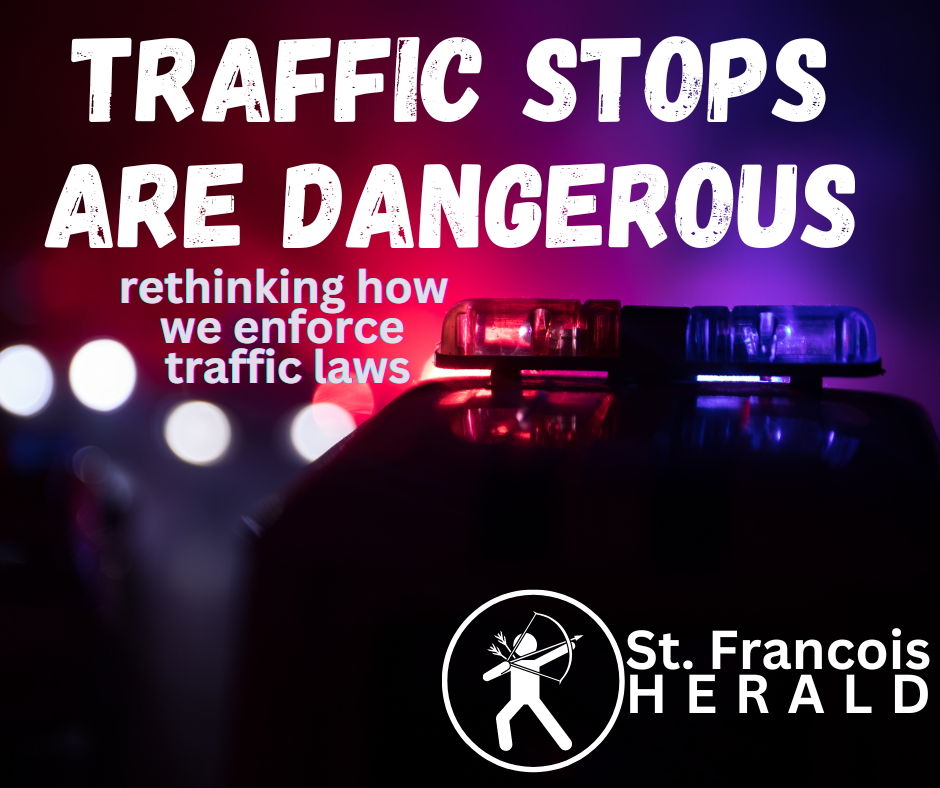Time to Rethink Traffic Stops for Minor Infractions: A Safety Imperative for St. Francois County
Driving through the picturesque landscapes of St. Francois County, it’s hard to imagine that an experience as seemingly mundane as a traffic stop could turn into a dangerous situation. Yet, national and local statistics suggest it’s time to reconsider how we handle minor traffic infractions for the safety of both our motorists and law enforcement officers.
Research indicates that traffic stops for minor infractions can lead to harmful consequences. According to a 2017 report from the Stanford Open Policing Project, traffic stops are the most common interaction between police and citizens, with approximately 20 million occurring annually across the U.S. While most of these stops are routine, a significant number escalate into tense encounters, occasionally resulting in physical harm or fatalities.
Locally, our community has also felt the effects. An analysis of Missouri Highway Patrol data reveals that several accidents over the past few years in St. Francois County occurred during or just after traffic stops on the highway, often at high speeds.
Even when there’s no immediate danger, traffic stops can cause significant delays and disrupt traffic flow, leading to secondary accidents. Moreover, for the officers involved, each stop carries an element of unpredictability and risk.
While it is crucial to ensure that drivers adhere to traffic rules, it’s equally essential to consider the best means of achieving this objective. For minor infractions, like expired tags or broken taillights, there may be more effective, safer methods to ensure compliance.
One such method could be the adoption of camera-based systems, similar to those used for red light violations. Using advanced technology, these systems can identify license plates of vehicles with minor infractions and automatically issue citations by mail. This method would significantly reduce the need for traffic stops, thereby minimizing potentially dangerous interactions.
Moreover, educational initiatives can be put in place to encourage and remind motorists about the importance of routine vehicle maintenance, timely registration renewals, and adherence to traffic rules.
As we advocate for the increased use of enforcement cameras in handling minor traffic infractions, it’s essential to address a critical concern shared by many citizens: the potential for infringement on our privacy. Indeed, the distinction between enforcement cameras and more pervasive surveillance systems, like Digital License Plate Readers (LPRs), is a necessary one to make.
Enforcement cameras, such as those proposed for dealing with minor traffic violations, are activated by specific infractions. These include running a red light or exceeding the speed limit. The cameras capture an image of the vehicle’s license plate when an infraction occurs, and a citation is automatically generated. The focus is on the infraction, not the individual, and data is not continually collected or stored.
On the other hand, Digital LPRs are a form of surveillance technology that continuously collects data on all vehicles that pass by, regardless of any infractions. These systems have the potential to track and catalog the movements of citizens, storing this data for extended periods. There’s a growing concern that this type of surveillance could violate Fourth Amendment rights, which protect against unreasonable searches and seizures.
In moving towards a safer St. Francois County, we must ensure that our solutions respect the rights and freedoms of our citizens. Enforcement cameras for minor traffic violations can play a vital role in enhancing safety without compromising privacy. They serve a specific purpose – promoting adherence to traffic rules – and do not gather or store data about the movement of individuals.
It’s essential to have a public conversation about these technologies, their uses, and their implications for privacy. Regulatory measures must be in place to prevent any misuse of data, with strict guidelines regarding how long any data can be retained and who can access it. We should also ensure transparency in the implementation of these systems, including public notifications about their locations and purposes.
As we strive to make our roads safer, we must simultaneously safeguard our cherished rights and liberties. By making a clear distinction between enforcement cameras and more intrusive surveillance systems, we can achieve a balance between public safety and personal privacy, ensuring a future where our county remains both secure and free.
The primary objective of law enforcement is to protect and serve the community, and the safety of both officers and citizens should be paramount. By rethinking how we enforce minor traffic infractions, we can create a safer, smoother driving experience for everyone on the roads of St. Francois County.
As we look to the future, let’s embrace solutions that safeguard our community, promote efficiency, and uphold the spirit of the law. It’s time to drive towards a safer St. Francois County.

